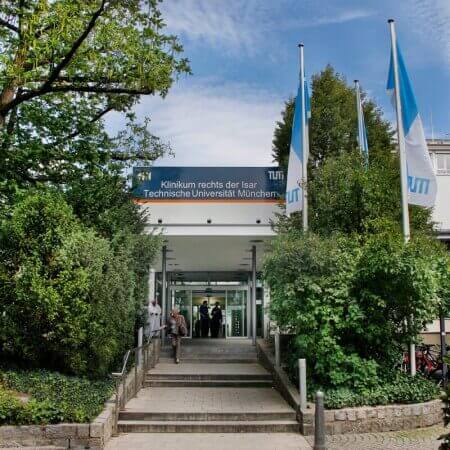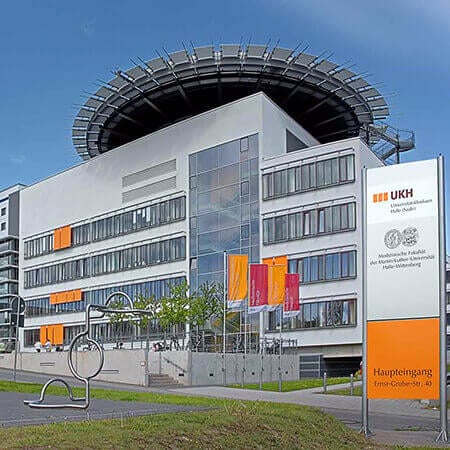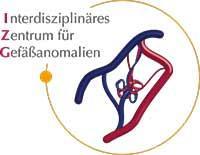Rectal Cancer — Embolization or Chemoembolization: treatment in the Best Hospitals in the World
Treatment prices are regulated by national law of the corresponding countries, but can also include additional hospital coefficients. In order to receive the individual cost calculation, please send us the request and medical records.

Department of Interventional Radiology
The Department of Interventional Radiology offers the full range of imaging examinations, as well as innovative image-guided minimally invasive techniques for the treatment of tumors, vascular diseases and internal pathologies (for example, CT, MRI, PET-CT, SPECT). The department's doctors have deep knowledge and colossal experience in the field of interventional radiological methods of treatment, which represent an excellent alternative to open surgical interventions. Despite the high level of technical equipment and the presence of advanced computerized systems, the focus is always on the person with his individual needs. Compliance with current clinical protocols and high professionalism of the department's specialists contribute to the successful clinical practice, as well as the reputability of the department among the best medical facilities of this kind in Germany.




Department of Interventional Radiology and Neuroradiology
The Department of Interventional Radiology and Neuroradiology offers a full range of advanced imaging diagnostics and minimally invasive treatments on both an inpatient and outpatient basis. The department has state-of-the-art medical equipment for imaging tests such as X-ray, computed tomography, magnetic resonance imaging, digital subtraction angiography, and mammography. The medical facility also performs many highly effective interventional therapeutic procedures under image guidance, which in many cases allow patients to avoid traumatic open surgery. For example, the department successfully performs local fibrinolysis, thrombectomy, percutaneous transluminal angioplasty, hemostasis, transarterial chemoembolization, uterine artery embolization, and other procedures. The department's neuroradiologists specialize in brain and spinal cord imaging and the treatment of central nervous system disorders. Interventional neuroradiology focuses on the treatment of carotid artery stenosis, brain aneurysms, arteriovenous malformations, dural fistulas, subdural hematomas, brain tumors, skull base and spinal tumors, and chronic back pain. The department's medical team has extensive clinical experience in their areas of expertise. The specialists are guided by the recommendations of the German Society for Interventional Radiology and Minimally Invasive Therapy (DeGIR) and the German Society for Neuroradiology (DGNR), which helps to achieve the best results.






Department of Adult and Pediatric Diagnostic, Interventional Radiology, Neuroradiology
The Department of Adult and Pediatric Diagnostic, Interventional Radiology, Neuroradiology is one of the best institutions of its kind in Germany and offers patients the full range of radiological studies and imaging-guided minimally invasive therapy. The department’s scope of tasks also includes imaging diagnostics in children of all age groups, detection and invasive treatment of cerebral vascular pathology (neuroradiology). Patient care is provided both on an inpatient and outpatient basis.






Rectal cancer is a type of colorectal cancer. The disease is treated using surgical techniques. Prior to surgery, radiation therapy and chemotherapy are often provided to shrink the tumor. In the complicated course of rectal cancer, chemoradiation therapy is contraindicated, and therefore the most common method of treatment in such cases is rectal artery chemoembolization.
Content
- What are embolization and chemoembolization
- Specifics of embolization in the treatment of rectal cancer
- Chemoembolization prior to surgery
- How is the procedure performed
- After embolization
- Embolization for the treatment of liver metastases
- Why is it worth undergoing chemoembolization abroad
- Treatment in Europe with Booking Health at an affordable price
What are embolization and chemoembolization
Embolization is the treatment in oncology by obstruction of the arteries feeding the tumor. As a result of the procedure, the blood supply to the neoplasm is interrupted, and most of the cancer cells die.
Doctors usually combine embolization with regional chemotherapy. Chemotherapy drugs are injected into the arteries feeding the tumor. They accumulate in the tissues of the neoplasm in large quantities and destroy cancer cells. Such drug concentrations are unattainable using conventional systemic chemotherapy, as if they were administered intravenously, the treatment would be too toxic for the patient.
Thus, chemoembolization combines two mechanisms of action:
- Cessation of blood flow to the tumor.
- Damage to cancer cells with high doses of drugs.
The procedure is minimally invasive – a doctor gains access to the arteries feeding the tumor through a small incision in the thigh or arm. He inserts a catheter through the vessels, and the characteristics of the blood supply to the cancer are determined using angiography (X-ray scanning with the introduction of contrast into the arterial bed).
Embolization can be combined with almost any cancer treatment. It can be repeated multiple times. The first procedure is successful in 100% of cases. Whenever required, it can be repeated several times, but the results of subsequent embolization procedures may be less pronounced.
Specifics of embolization in the treatment of rectal cancer
Embolization and chemoembolization have been used in oncology in the 70s of the last century. The first area of application was liver cancer. And today, primary and metastatic liver tumors remain the most common indications for the treatment of cancer patients by embolization.
In the presence of a tumor in the rectum, rectal artery chemoembolization is performed. This procedure is technically difficult. Each patient has his own characteristics of the blood supply to the rectum. It has a larger reserve of collateral (bypassing large vessels) blood flow, so a part of the tumor can retain blood supply sources even after embolization. However, a developed collateral network also has advantages. After chemoembolization, patients usually do not develop complications associated with ischemia (insufficient blood supply) of the rectal wall.
For the first time ever, embolization for the treatment of rectal cancer was carried out in 1988. It was performed as a palliative procedure to stop bleeding. Doctors closed the lumen of the superior rectal arteries and branches of the internal iliac arteries. The procedure stopped bleeding and reduced the intensity of pain. All patients had decreased tumor size.
Today, the method of treatment is used mainly in patients who are planning to undergo surgery for cancer. Doctors close the lumen of all rectal arteries at once: superior, middle and inferior ones. This method for the treatment of rectal cancer is called RACHEL – Rectal Arterial CHemoEmboLization procedure.
Chemoembolization for the rectal arteries requires careful intraoperative diagnosis. This is due to the fact that different patients have different blood supply to the rectum. Some arteries are well developed, while others are characterized by moderate development. Sometimes there is one artery, sometimes there are several of them. There are various options for the branching of the arteries. There are also arteriovenous fistulas, through which emboli can enter the veins from the arteries, causing severe complications. Therefore, in Europe, patients are carefully examined before and during chemoembolization (TACE) in order to ensure a high efficiency of the treatment procedure, and at the same time make it safe for patients with rectal cancer.
Chemoembolization prior to surgery
The techniques for removing rectal tumors have improved significantly in recent years. Nevertheless, survival rates have not increased significantly: over the past 30 years, the five-year survival rate has increased from an average of 40% to 50%. Distant metastases can sometimes become the source of relapse, but local relapses are often observed.
In recent years, there has been progress in the fight against rectal cancer due to preoperative (neoadjuvant) treatment. The benefits of preoperative radiation have already been proven. Neoadjuvant chemotherapy for cancer is being increasingly used in Europe. The treatment prior to surgery can shrink the size of the tumor and kill most cancer cells. As a result, the operation to remove the tumor becomes less traumatic, and the risk of cancer recurrence decreases.
But with complicated forms of rectal cancer, chemotherapy and radiation therapy prior to surgery are not always possible. Cancer therapy takes a long time, but constant rectal bleeding, purulent-septic complications, intestinal obstruction are contraindications for chemoradiation therapy and quickly worsen the patient's health condition. He may simply not live to see the operation, which is planned only in a few weeks or months.
In some hospitals, preoperative arterial chemoembolization is used instead of chemoradiotherapy for cancer in such cases. It is provided for patients with rectal cancer just 3-5 days before surgery. The procedure can help:
- Reduce tumor size.
- Reduce the risk of cancer recurrence and lymphogenous metastasis.
- Reduce blood loss during the surgical procedure.
- Improve the functional effect of the operation – it is more likely to preserve the locking apparatus of the patient's rectum, which is important for independent voluntary defecation;
- Reduce the trauma rate of the surgical intervention.
When using preoperative rectal arterial chemoembolization in patients with rectal cancer accompanied by complications, the possibility of performing sphincter-sparing surgery increases from 60% to 80%. The possibility of a reconstructive plastic stage of the surgical intervention increases from 17% to 63%. Therefore, after this procedure is combined with surgery, patients have a better quality of life after cancer treatment.
How is the procedure performed
Transarterial rectal artery embolization is performed through an incision in the groin. The doctor inserts a catheter into the patient's femoral artery. He then performs superselective catheterization of the inferior mesenteric artery. From it, the doctor enters the superior rectal artery. In different patients, the blood supply to the rectum is provided by a different number of vessels. The superior rectal arteries can be two, three, and sometimes they are multiple and very thin. If technical difficulties arise, doctors in Europe use a microcatheter technique, which makes it possible to perform arterial embolization even in complex situations.
Arteriography is performed several times during the procedure. The doctor injects the contrast agent into the patient's blood vessels, after which a series of X-rays are taken.
After reaching the superior rectal artery, the doctor performs arteriography. It assesses the nature of blood flow in the artery trunk, the peculiarities of the blood supply to the tumor, the presence of collaterals (bypass of blood supply) and arteriovenous fistulas (communication of arteries with veins). Particular attention is paid to the discharge of blood into the iliac veins, which increases the risk of embolic complications in the patient, including pulmonary embolism.
After angiography, the doctor injects an oil solution with chemotherapy drugs or drug-saturated microspheres into the patient's superior rectal artery. Pharmorubicin or eloxatin are commonly used as drugs for suppressing rectal cancer. They enter cancer cells in high concentrations and destroy the tumor.
Embolization is continued until the complete cessation of arterial blood flow. If oil chemoembolization is used, the procedure is often complemented by occlusion of the superior rectal artery with metal coils.
Depending on the location of the tumor, the intervention can also be performed on the inferior rectal arteries. Embolization of the middle left rectal artery can also sometimes be performed, while the right one is poorly developed in most patients.
After embolization
After the procedure, the patient may experience pain and an increase in body temperature. This phenomenon is called postembolization syndrome. It is unpleasant, but usually not harmful to health. The symptoms can be treated with drugs. As a rule, it is sufficient to take nonsteroidal anti-inflammatory drugs. They simultaneously reduce pain and lower body temperature. In rare cases, it is necessary to resort to narcotic analgesics. The manifestations of postembolization syndrome gradually decrease and disappear after 2-3 days.
The listed symptoms are not observed in all patients. For some of them, the only manifestation of postembolization syndrome is a slight increase in body temperature, which lasts 12-24 hours.
Bleeding stops immediately after the procedure. Within a few days, the patient's health condition improves and he can be operated on. The surgical procedure to remove the tumor becomes safer, less traumatic and provides better functional outcomes, since most patients manage to retain the ability to defecate on their own.
Embolization for the treatment of liver metastases
The patients with rectal cancer often develop liver metastases. For patients with such a pathological condition, the best treatment is an operation – removal of a part of the liver along with metastatic foci. But in most patients, such a surgical procedure is impossible. The second most effective cancer treatment is chemoembolization to control cancer metastases.
The technique is not used as an independent procedure. It is always combined with other methods of cancer treatment: surgery to remove the primary tumor of the rectum, systemic drug therapy, and radiation. Vascular chemoembolization can sometimes be complemented by ablation of small tumor foci. In addition, control of other distant cancer metastases with surgery or radiation therapy is required.
To treat metastatic rectal cancer, doctors close the lumen of the branches of the hepatic artery with microspheres. The liver has a dual source of blood supply: it receives 75% of its blood from the portal vein, and only 25% from the hepatic artery. Therefore, as a result of the procedure, the metastatic foci regress, but the healthy parenchyma of the liver practically does not suffer.
Why is it worth undergoing chemoembolization abroad
Arterial chemoembolization is the best preoperative treatment option for patients with rectal bleeding, inflammatory complications, and intestinal obstruction. To make the treatment safer and more effective, you can get medical services abroad. In the best hospitals in Europe, rectal arterial chemoembolization is almost always successful and takes place with minimal health risks. Doctors have extensive experience in performing it, so the procedure is almost always successful.
There are several reasons why it is worth undergoing rectal artery embolization abroad:
- High-precision diagnostics both before the procedure and during the manipulation.
- The use of the microcatheter technique makes it possible to successfully perform chemoembolization even of multiple thin rectal arteries.
- The success of the procedure is achieved regardless of the individual characteristics of the blood supply to the rectum.
- If necessary, simultaneous chemoembolization of all rectal arteries can be performed at once: chemoembolization of inferior, middle and superior arteries.
- There can be used different variants of transcatheter embolization and chemoembolization, and sometimes their combination can be used as well: oil chemoembolization, occlusion of vessels with spirals, introduction of drug-saturated microspheres into the lumen of rectal arteries.
- The risk of severe complications, including pulmonary embolism, is close to zero.
- An effective combination of transcatheter chemoembolization of rectal arteries with other methods of cancer treatment, primarily surgery.
Treatment in Europe with Booking Health at an affordable price
To undergo treatment in one of the European hospitals, please use the services of the Booking Health company. On our website, you can see the cost of treatment in different hospitals, compare prices and book a medical care program at an affordable price. Transarterial embolization in European hospitals will be easier and faster for you, and the cost of treatment will be lower.
Leave your request on our website. Our employee will contact you and advise you about the treatment in Europe. Booking Health will take care of the organization of your trip. We will provide the following benefits for you:
- We will choose a hospital for treatment in Europe, whose doctors specialize in the treatment of rectal cancer and achieve the best results.
- We will help you overcome the language barrier, establish communication with your attending physician.
- We will reduce the waiting time for the start of the medical care program and book a doctor's appointment on the most suitable dates.
- We will reduce the price. The cost of treatment in German hospitals will be lower due to the lack of additional coefficients for foreign patients.
- We will take care of all organizational issues: documents for entering the country, transfer from the airport, hotel, interpreter, etc.
- We will prepare a program and translate medical documents. You do not have to repeat the previously performed diagnostic procedures.
- We will provide communication with the hospital after treatment in Europe.
- We will organize additional diagnostic examinations and treatment in European hospitals, if necessary.
- We will buy medicines abroad and forward them to your native country.
- We will help you keep in touch with the hospital and the doctor after treatment in Europe.
You will receive treatment from the best doctors in the world. The Booking Health staff will help reduce the cost of treatment and solve all organizational issues, and you will only have to focus on restoring your health.
Authors: Dr. Nadezhda Ivanisova, Dr. Sergey Pashchenko

